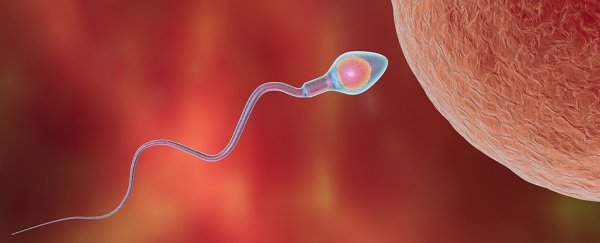Researchers have come up with yet another candidate for a male contraceptive - this time in the form of a chemical found in certain traditional arthritis remedies.
The team identified molecules that stop sperm from reaching the necessary speed to charge into the egg cell, opening the way for both a new kind of emergency contraceptive and prophylactic that anybody could use.
The target of these molecules is a small gate found throughout the sperm's tail called Catsper (a combination of cation channel and sperm), which was identified in 2001 by researchers studying male infertility.
At the time, the channel was recognised as a perfect candidate for a non-hormonal form of contraception.
Catsper's job is to allow a flood of calcium ions into the tail at the right time, triggering a final flurry of whipping just as the sperm is about to ram its head into the egg cell's (or ovum's) outer layers and squirm its way inside.
Unable to get this running start, the sperm can't do much more than writhe about pathetically outside the egg cell until they eventually starve.
Normally, these channels open when the sperm enters a fog of progesterone close to the ovum. But now scientists from the University of Berkeley, California have found that other hormones - such as testosterone, oestrogen, or the stress hormone hydrocortisone - could compete for a position at the channel and block progesterone's effect.
Dosing up on these kinds of hormones isn't a great plan for blocking sperm, so the researchers went on the hunt for other chemicals that looked similar enough to keep Catsper closed without the risk of producing other nasty side effects.
A category of organic compounds called triterpenoids was a good place to start. A variety of organisms make them, and they form the basis of hormones such as steroids.
Two candidates are commonly found in plants and already recognised for their potential medical uses.
Lupeol is found in things like white cabbage, strawberries, and olives, and has been studied for its possible benefits as an anti-inflammatory.
A chemical in thunder god vine (Tripterygium wilfordii) called pristimerin has been used in traditional Chinese remedies to treat arthritis, and has in recent years shown potential as a treatment for pancreatic cancer.
Under laboratory conditions, both of these chemicals prevented the sperm from charging up in the presence of progesterone.
The fact both are in plants which have been consumed for some time bodes well for them as safe pharmaceuticals, but as with all of these things, it's important to critically test them before we get too excited.
This study is still pre-clinical, and although the researchers are currently working on animal trials, we're still nowhere near establishing the chemicals' efficacy in humans, or whether their vague resemblance to some of our hormones could have unwanted side effects.
But all pharmaceuticals start somewhere, and there are some big advantages to medications that could quickly put a halt to sperm that are already out of the gate.
Current forms of emergency contraception typically rely on hormones that can have uncomfortable side effects or conflict with personal values over preventing fertilised eggs from implanting.
"This method is not only 10 times more effective than anything currently on the market, but it clearly prevents fertilisation," lead researcher Polina Lishko told Wired. "There's no embryo at any point."
Developing a trustworthy, non-hormonal form of contraception that could be used after sex to prevent sperm from reaching their goal could be useful for those who are opposed to using existing options.
There is also the possibility that these channel blockers could work their magic from the man's side before they set off on their journey, delivered through a pill or patch.
Given the humble old condom still lets through a number of accidental fertilisations each year, having one more way to lower the risk would be a bonus.
A reversible form of sperm-blocker in the form of an injected gel is inching closer to release in the next few years, but the hunt is still on for an effective, non-invasive form of male contraception.
This research was published in the Proceedings of the National Academy of Sciences.
